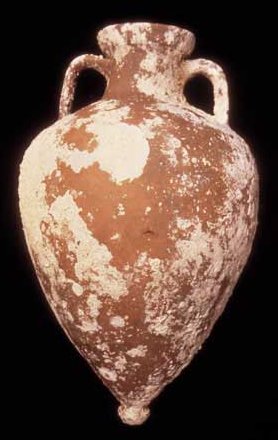As Beautiful, Unusual and Well made as its fraternal twin
☞
★★★★★
☞
This and the RC-A8 are the only two lights I know of that were made taking full advantage of the ability of a numerically controlled lathe to produce arbitrary smoothly curved bodies of revolution, almost like a pottery wheel. Only the Smiling Shark SS-5039 compares to them in artistic and skillful use of the medium. Smiling Shark SS-5039 1 x AAA size flashlight, modification notes, Now 3 x 7135 with modes, on a BLF Tiny 10 board.
Both were made in black and “silver” or “grey”, but silver RC-A6s are now hard to find.
The shape is almost a few sections of cones and cylinders fit together with rounded transitions, but most of the lines defining the cones are curved a bit.
Like its sister the RC-A8, it is a Designerlämpchen, a designer flashlight. http://taschenlampen-tests.de/?p=2557
The shape is at least close to being a longer narrower version of that of the Romisen RC-A8. Romisen RC-A8 -- Beautiful, Unusul and Well Made It is bulkier than necessary in a pocket, but it is very comfortable and easy to hold in a hand, even while doing something else with the hand.
☞
There are significant internal differences between the RC-A8 and A6. There is even the architectural difference that an AAA cell fits in the narrow neck, so there is no separate contact board. The A6 has a boost driver. The A8 has a 700 ma. regulating “linear” driver similar to 2 x 7135.
☞
Modification potential
One can hope to improve brightness and/or run time with a driver swap. To maintain throw with the small diameter reflector, an LED swap might be only to a more efficient XR-E, like one out of a POP lite, or to an XP-E2. Or one can use a lower forward voltage LED to put more light out.
The cost of the slim pencil-like shape is the limitations that 2 x AA, except for 1.5 V lithium primaries, doesn’t have a slightly higher voltage replacement like CR123A does, and that 15 mm. is not a lot of space for a boost or buck driver. A zener modded and well cooled BLF SK-68 and two IMR 10440s seems like the only way to get very much current in it.
 The driver is soldered to the brass pill. A nice feature but it makes it harder to take apart. There is a mushroom shaped contact button.
The driver is soldered to the brass pill. A nice feature but it makes it harder to take apart. There is a mushroom shaped contact button.
The spaces in the pill for the driver and star are each 15 mm. in diameter. The lower part of the pill is 16 mm. and fits in a 16.5 mm. space. So a slightly trimmed 17 mm. driver may fit.
A small star sits between the big LED package and the solid brass pill. There is plenty of heat transfer adhesive.

☞
Surface finish
Art
Flashlight design at its highest point seems to have reached about the point of ancient Greek pottery, without the painting.
The usual criticism of Greek pottery is that it is “mathematical”, in the sense of the simple geometry that was known at that time. An other way to say that is that these lights still resemble, a little, things that could be made on a manual lathe. Either because of his software or his mind set, the designer was not totally free of irrelevant mathematics.
The ideal is still far off. That would be shapes like classical Chinese pottery.




Some places I have learned these things:
http://www.asianart.org, http://www.cityofpaloalto.org/gov/depts/csd/artcenter/, http://www.edpink.com/
☞
Reliability
Out of a total of eight, one of the A6 drivers seemed weak and one RC-A8 has a switch that won’t work with the tail screwed all the way on. The switch is difficult to access, being crimped in at the end of the long tail section.
The light output of my first example was similar to that of an RC-A8, but it drew more current from the 2 x AAA cells than the A8 did from its CR123A. I read 0.55 A at the tail of the A6 and 0.17 now at that of the A8. They both had XR-E LEDs, so the main difference must be in the drivers. Since AAA alkaline cells are cheap and easily available and AAA NiMH cells are easy to charge and good for many cycles, it was usable as is with limited output. A new driver improved the output.
The second RC-A6 that I modified had some space under the star, where it had pulled away from the pill before the thermal silicone adhesive cured:

At the current it drew with alkaline cells, that must not have caused a large decrease of output and would not have shortened the LED life much, but it is a defect and it might matter if the driver and/or cell type had been changed without changing the LED.
☞
Beam shots
UltraOK SK-68 center, A6s on both sides.
Zoomed out

The cells are, left to right: 2 x Rayovac alkaline AAA, 1 x Excell Alkaline AA, 2 x Eneloop NiMH AAA;
the charge states: 3.05, 1.45, 2.45 volts.
The currents are: 0.5 , 1.1 , 0.7 ampere respectively, comparable in power level and run time.
☞
Conclusion
The LED and possibly the driver are a bit out of date, but it looks and feels so good that I can’t help giving it five stars.
★★★★★</span style>






















